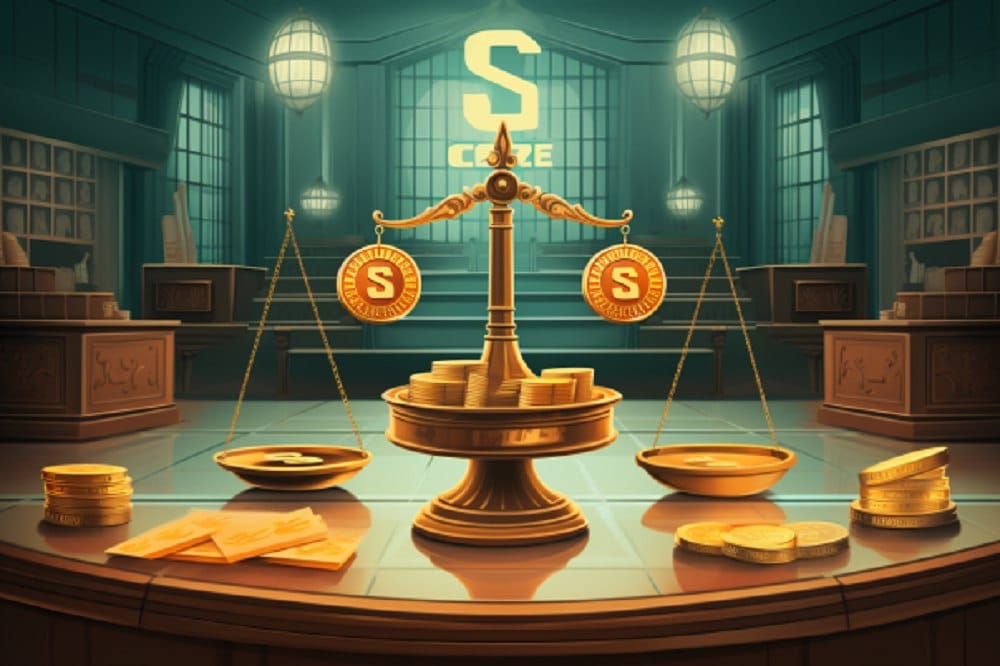
Ripple’s RLUSD Stablecoin Set for NY Approval
An NYDFS approval will enhance cross-border payments for Ripple’s RLUSD stablecoin, making it compete with USDC and USDT in the growing stablecoin market.
NYDFS Set to Approve RLUSD Stablecoin by December 4
Ripple Labs is poised to launch its RLUSD stablecoin with expected approval from the New York Department of Financial Services (NYDFS) in the coming days. According to a report by Fox Business, Ripple’s overcollateralized dollar-pegged stablecoin could debut as soon as December 4, marking a significant step in the company’s growing role in the global payment ecosystem.
The RLUSD stablecoin is designed to provide trust, stability, and utility, which aligns with Ripple’s ongoing mission to enhance cross-border payments. Ripple co-founder Brad Garlinghouse stated that the stablecoin will complement XRP in liquidity solutions, ensuring faster settlement times for global transactions.
RLUSD Exchange Partnerships and Blockchain Expansion
Ripple first announced the development of RLUSD in April 2024, aiming to compete with major players like USD Coin (USDC) and Tether (USDT). The company has initiated testing of the stablecoin on the XRP Ledger and Ethereum mainnet, with plans to expand the coin’s availability to other blockchains in the future.
Ripple’s analysts forecast that the stablecoin market could grow to $2 trillion by 2028, opening opportunities for multiple stablecoins, including RLUSD. Uphold, Bitstamp, and Bitso are some prominent exchange partners Ripple has lined up for its RLUSD listing.
These partnerships will be crucial in this stablecoin’s adoption and liquidity. Ripple will also provide full transparency, with third-party audits scheduled for the collateral backing RLUSD.
Monthly reports on the coin’s reserves will ensure confidence in the token’s stability and the system supporting it.
Ripple’s Focus on Transparency
The approval from NYDFS will signal Ripple’s compliance with US financial regulations. It will also mark a crucial milestone in the firm’s efforts to integrate RLUSD into its broader payment solutions, which already leverage XRP for liquidity.
Despite concerns from XRP holders about the potential shift in focus from XRP to the new stablecoin, analysts believe RLUSD’s introduction will enhance Ripple’s liquidity offerings and expand its market footprint in the fast-evolving stablecoin space.
Coinbase Halts USDC Yield in Europe Due to MiCA
Meanwhile, leading crypto platform Coinbase has announced that it will end its USDC yield program for users in the European Economic Area (EEA), citing new regulations under the European Union’s Markets in Crypto-Assets (MiCA) framework. Starting December 1, European customers will no longer earn interest on their USDC holdings.
The MiCA regulation aims to increase stability and transparency in the cryptocurrency market. This regulation, which took effect in June 2023, requires stablecoin issuers and crypto companies operating within the EU to adhere to stringent guidelines with full compliance by December 30, 2024.
Frustration Over MiCA Regulations on Stablecoins
The decision to end USDC rewards has frustrated Coinbase users, many of whom rely on stablecoin yields for passive income. In response to this development, Mikko Ohtamaa, co-founder of Trading Strategy, expressed his dissatisfaction on social media.
Nevertheless, the MiCA rules are part of a broader regulatory push to control the rapidly growing stablecoin market. Stablecoins like USDC, which peg their value to fiat currencies, have become essential in digital finance, offering stability in the volatile crypto market.
However, under MiCA, interest on deposits of stablecoins will no longer be acceptable, a provision that responds to concerns over the risks posed by interest-bearing stablecoin products.
Tether Ceases Support for its Euro-pegged Stablecoin
Tether, another major stablecoin issuer, has adjusted its offerings in response to regulatory changes. Earlier in the week, Tether announced it would cease support for its euro-pegged stablecoin, citing “evolving regulatory frameworks” in the European market.
This move underscores the growing challenge for stablecoin issuers navigating Europe’s complex and shifting regulatory environment. Despite regulatory hurdles, some new players are entering the stablecoin market.
Meanwhile, data from DefiLlama shows that the total market capitalization of stablecoins has reached a record high of $192.7 billion at the time of writing. Notably, USDT holds a market share of 69.72%, with a circulating market value of about $134 billion.




